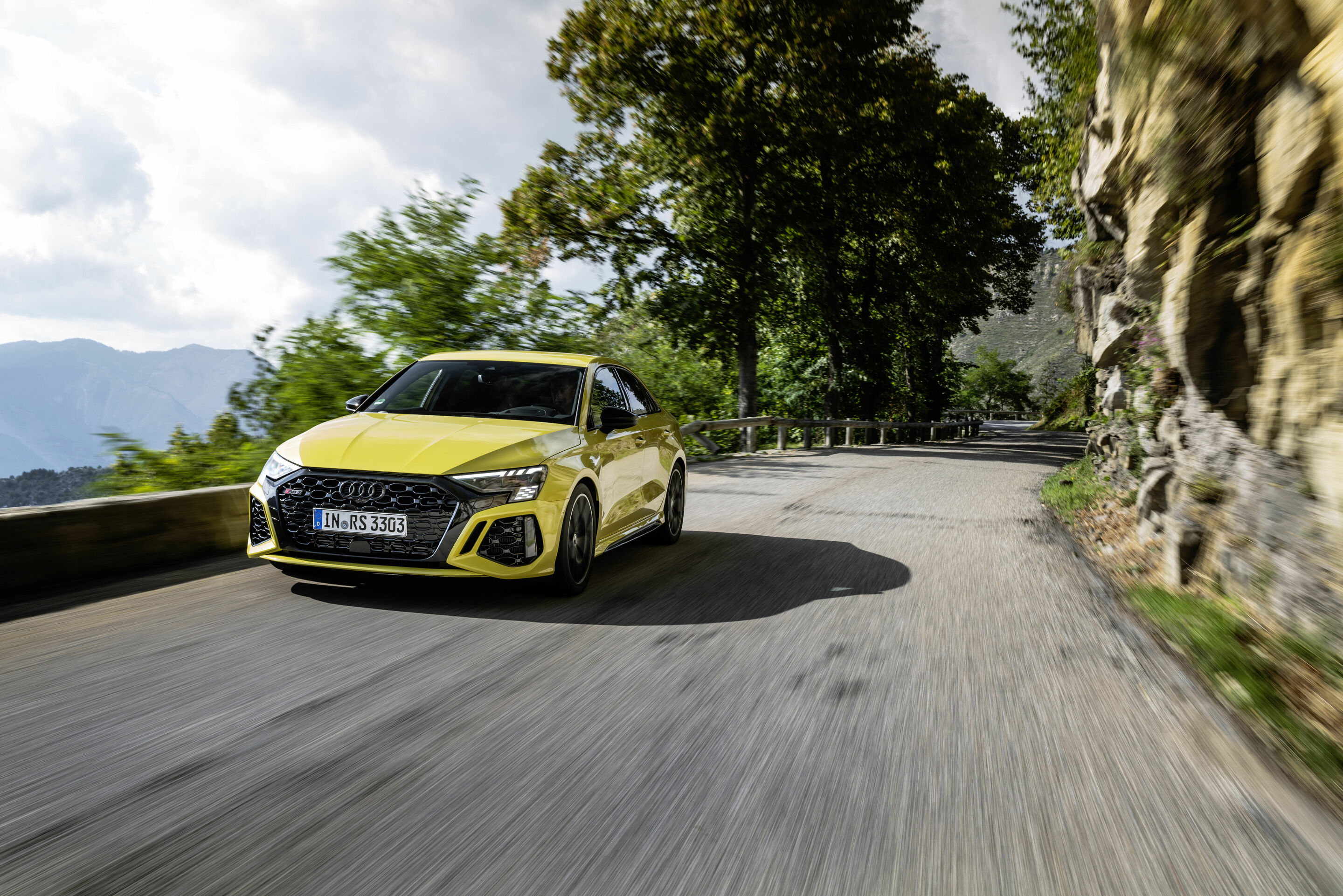Search

The four-door coupé demonstrates bundled technical expertise – and Audi’s passion for details. Powerful, sporty, and confident, it reflects the brand’s high standards for developing and building cars. The RS e-tron GT performance is the dynamic flagship for electric mobility at Audi.
In addition to a permanent-magnet synchronous motor (PSM) on the front axle with a reinforced driveshaft and an output of 252 kW (342 PS), the electric Gran Turismo features a newly developed PSM on the rear axle with an output of 415 kW (564 PS).The increased copper density of the special hairpin winding in the electric motors’ stator maximizes current conduction. Moreover, the rotor in the electric motor at the rear is more compact and lighter. Overall, Audi has reduced the weight of the electric motor on the rear axle by ten kilos. What’s more, both electric motors have power reserves for dynamic driving situations. Launch Control can briefly use resources from the HV battery and the electric motors for an output of up to 680 kW / 925 PS (combined power consumption: 20.8–18.7 kWh / 100 km; combined CO2 emissions: 0 g/km; CO2 class: A). Moreover, the front axle features modified power electronics with a revised pulse inverter, enabling higher discharge currents of up to 600 amps – 300 amps more than in the other variants, the Audi S e-tron GT and the Audi RS e-tron GT. The rear axle also operates at 600 amps. Audi has increased braking recuperation to 400 kW. The maximum deceleration value is 4.5 m/s2.

Fourth-generation Continental GT Speed becomes the most powerful road going Bentley ever created All-new 782 PS, 1000 Nm ‘Ultra Performance Hybrid’ powertrain 50 miles / 81 km of electric range, and CO2 emissions of 29 g/km 0-60 mph in 3.1 seconds (0-100 km/h in 3.2 secs) Top speed 208 mph (335 km/h) Latest generation brings bolder design DNA, with single headlamps, that heralds a design revolution for Bentley 68 per cent new components versus outgoing third generation World-leading four-seat interior can offer wellness seat technology, new air ionisation, 3D leather, new quilting and new dark chrome finish All new electrical architecture enables integration of new class-leading technology for unrivalled user experience in the luxury car sector ‘My Bentley App Studio’ integrates popular apps directly into the car New GTC Speed launched simultaneously with coupe sibling New Continental GT Speed sets unofficial ‘underwater speed record’ of 208 mph (335 km/h) through the deepest tunnel in the world Handcrafted at Bentley’s Dream Factory in Crewe, in a virtually limitless number of possible configurations
Bentley Motors is proud to reveal the fourth generation Continental GT Speed, following in the 21-year tradition of the Continental GT family by redefining the ultimate blend of supercar performance, handcrafted luxury and everyday usability.
A comprehensive exterior and interior redesign with clean modern detailing follow the new design DNA established by the coachbuilt Bentley Bacalar and Batur. Outstanding performance is brought by an all-new Ultra Performance Hybrid powertrain with 782 PS and 1,000 Nm, from a 4.0-litre V8 working in tandem with a 190 PS electric motor. 0-60 mph in 3.1 seconds is the result, with the benefit of 50 miles (81 km) of usable electric-only range (on the EU drive cycle) and a total range of 534 miles (859 km) – creating an everyday supercar.

. The first five-cylinder engine of the new age is actually a commission project for the VW Jetta, produced by VW Mexico. For the US market, we want to develop a robust aspirated engine with high displacement and starting torque. “For us, that was the basis for reviving the turbocharged five-cylinder tradition,” says Pelzer. Pelzer, who had just taken over as head of engine construction back then, remembers that time well. “We had just finished developing the first five-cylinder successor engine, which was then initially transverse-mounted in the Audi TT RS,” he says. The TT RS plus, which Audi presented in 2012, even reaches 265 kW (360 PS) instead of the previous 340 PS. Extensive redevelopment For the new generation of the Audi TT RS
 Audi Anniversary Dates 2020
Audi Anniversary Dates 2020
This was the first time ever that a high-performance, sporty Coupé (147 kW/200 hp) was available with all-wheel drive – a drive concept which was previously only reserved for use in trucks and off-road vehicles. The idea arose in the winter of 1976/77 during test drives for the VW Iltis off-roader which Audi was developing for the German army. The excellent driving characteristics of this model on ice and snow led the engineers to the idea of installing an all-wheel drive system in a series-production Audi 80. Its motorsport debut in the Audi quattro came a year later and revolutionized the international rally scene. 20 years ago, AUDI AG won the 24 Hours of Le Mans for the first time. Since the beginning of this century, the brand has gone on to bring home a total of 13 victories. 30 years ago saw the premiere of the Audi V8 in the DTM German Touring Car Championships, where the car would go on to win the season. 25 years ago, the brand from Ingolstadt presented its Coupé concept for the Audi TT at the IAA in Frankfurt. 110 years ago, the first Audi car was launched on the market: the 10/22 PS. Called the Typ A internally within the company, the Phaeton was developed by August Horch and Hermann Lange. 70 years ago in August 1950, the first DKW passenger car since the Second World War rolled off the production line in the then Düsseldorf plant. It's also been 50 years since the Ingolstadt location's technical development building was ready for the team to move in. Equally worth remembering are the following dates: 30 years since the Audi Duo hybrid vehicles; 30 years since the Audi S2 Coupé; 30 years since the Audi 100/C4 – the first six-cylinder Audi; 50 years since the market launch of the Audi 100 Coupé S; 135 years since the Audi predecessor company Wanderer was established; 140 years since the Neckarsulm location opened. A complete overview can be found in the anniversary booklet online in the Audi MediaCenter.